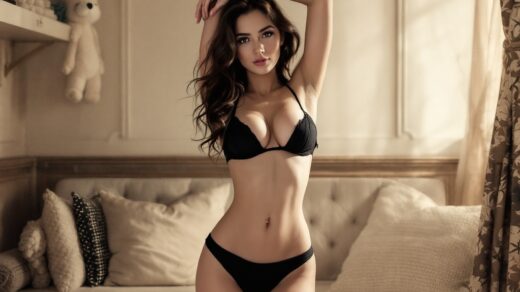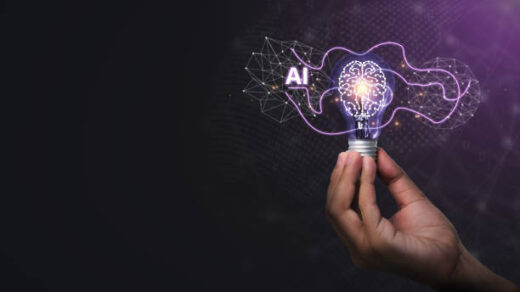The ascent of artificial intelligence has transformed numerous sectors, notably in the realm of image creation. As advancements in technology persist, inventors and engineers continuously seek innovative techniques for crafting lifelike visuals. In this pursuit, Generative Adversarial Networks (GANs) and Diffusion Models have emerged as leaders. Each of these methodologies boasts particular strengths and weaknesses, rendering them apt for varying uses. It’s essential for artists, developers, and scholars to grasp these differences, especially concerning nude image synthesis. This piece explores the mechanics of both models, offering a thorough comparison to guide decisions on the most effective method to employ.
Despite their distinct strengths, selecting between GANs and Diffusion Models can be a tricky endeavor. Image clarity, training duration, and the amount of control available for output are crucial factors that can significantly influence results. Considerations include the nature of the project, required subtleties in the visuals, and available technical resources. As we examine the inner workings and effectiveness of both GANs and Diffusion Models, it will become clear that each method holds an esteemed position in the artistic sphere. With AI serving as a potent tool, the capability to craft compelling nude visuals sparks discussions on ethics, innovation, and technological responsibility.

Understanding GANs
Known as Generative Adversarial Networks, or GANs, these are a mesmerizing breakthrough in machine learning. Conceived by Ian Goodfellow in 2014, GANs function through the rivalry of two neural networks. The generator fashions new images while the discriminator evaluates them against a set of authentic ones. This adversarial dynamic spurs the generator to enhance its creations, reaching new heights of realism. GANs have gained acclaim for their talent in swiftly generating high-resolution images and their applicability across diverse creative outlets. Both artists and technologists value this approach for its myriad uses, notably in generating imaginative and engaging visuals.
How GANs Operate
GANs operate through a process characterized by feedback and competition. Initially, the generator crafts an image from random data. The discriminator then assesses this image to determine if it’s genuine or synthetic. When the discriminator deems it fake, it feeds information back to the generator on improving its methods. This iterative cycle culminates in the generator achieving a quality level indistinguishable from real images. Such a method can result in remarkably lifelike nude images, highlighting both artistic flair and technical skill.

Applications of GANs in Nude Image Synthesis
When applied to nude image synthesis, GANs possess several notable strengths:
- High-resolution output: Perfect for crafting visually impressive and detailed works.
- Quick training durations: Swift iterations and refinements are possible with efficiency.
- Diverse creative output: Capable of producing a broad array of artistic styles and variations.
Exploring Diffusion Models
Conversely, Diffusion Models offer a fresh viewpoint in generative modeling. These methods focus on an alternative approach that has been recognized for generating strikingly quality images. Essentially, Diffusion Models work by progressively adding noise to images, allowing them to learn to restore the original information by reversing the noise process. This unique approach is particularly valuable in creating images with refined effects and intricate details, proving beneficial when dealing with complex textures and diverse features in nude images.
Mechanism Behind Diffusion Models
The mechanism behind Diffusion Models is both innovative and methodical. Initially, images are corrupted through a process known as ‘diffusion,’ where they undergo incremental noise addition over numerous steps. Subsequently, the model masters the art of reversing this process, ultimately shaping images from a baseline of complete noise. By rolling back the diffusion process, these models craft high-fidelity visuals, often rich in elaborate details that fully capture artistic expression.

Advantages of Diffusion Models in Nude Image Generation
Diffusion Models present significant advantages within the sphere of nude image synthesis:
- Enhanced consistency and elegance: Model outputs typically exhibit greater consistency and visual charm.
- Superior handling of variety in features and textures: adept at preserving delicate details across different image styles.
- Increased control over fine-tuning image nuances: Allows specific modifications to achieve artistic aspirations.
Comparative Analysis of GANs and Diffusion Models
To perform a nuanced comparison, various criteria must be considered when evaluating the effectiveness of GANs and Diffusion Models in nude image synthesis. Below is a reworded summary table of the main differences:
| Criteria | GANs | Diffusion Models |
|---|---|---|
| Image Quality | Decent, but sometimes lacking in detail | Exquisite realism and intricacy |
| Training Demands | Requires extensive adjustments | More resource-intensive yet straightforward training |
| Adaptability | Moderate outcome control | Remarkable control and precision |
In terms of image excellence, Diffusion Models frequently deliver a degree of realism and detail that GANs may find challenging to match. Despite the quick generation capability of GANs, they may not consistently uphold the intricacy standards achieved by Diffusion Models. The methods for training also significantly diverge; GANs demand a hands-on, iterative approach, whereas Diffusion Models allow for a more organized learning framework. Ultimately, the specific needs of an artist will dictate the most appropriate model for their creations.
Conclusion
In summary, Generative Adversarial Networks and Diffusion Models have distinctly established themselves in the arena of nude image synthesis. GANs are preferred for their fast output and relatively simple application. Yet, Diffusion Models are unmatched when it comes to producing high-caliber, intricately detailed representations that embody artistic complexity. With AI making leaps and bounds, understanding the strengths and constraints of each method will enable creators to make educated choices aligned with their vision. The horizon for AI-driven content creation holds much promise, and the anticipated evolution of image synthesis technology is exhilarating.
FAQ
- What are GANs? GANs represent neural networks with two components—a generator and a discriminator—that work in opposition to craft realistic visuals.
- How do Diffusion Models differ from GANs? Diffusion Models create images by reducing noise incrementally, while GANs use a two-network competition strategy.
- Which model provides superior image quality? Diffusion Models generally yield images of higher quality and finer detail compared to GANs.
- Are GANs swifter than Diffusion Models? Indeed, GANs typically have faster training times, though this can compromise image stability and subtlety.
- Can both models be utilized for erotic art? Without a doubt, both GANs and Diffusion Models can effectively generate nude and erotic art, each flaunting distinct strengths.


